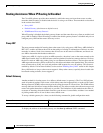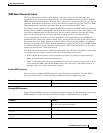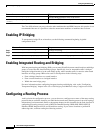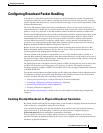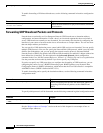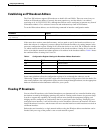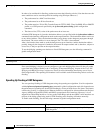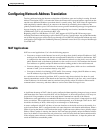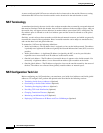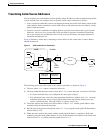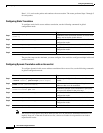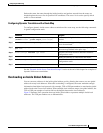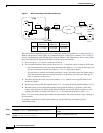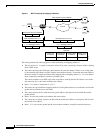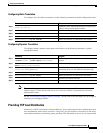
Configuring IP Addressing
Configuring Network Address Translation
IPC-36
Cisco IOS IP Configuration Guide
A router configured with NAT must not advertise the local networks to the outside. However, routing
information that NAT receives from the outside can be advertised in the stub domain as usual.
NAT Terminology
As mentioned previously, the term inside refers to those networks that are owned by an organization and
that must be translated. Inside this domain, hosts will have addresses in the one address space, while on
the outside, they will appear to have addresses in another address space when NAT is configured. The
first address space is referred to as the local address space and the second is referred to as the global
address space.
Similarly, outside refers to those networks to which the stub network connects, and which are generally
not under the control of the organization. Hosts in outside networks can be subject to translation also,
and can thus have local and global addresses.
To summarize, NAT uses the following definitions:
• Inside local address—The IP address that is assigned to a host on the inside network. The address
is probably not a legitimate IP address assigned by the Network Information Center (NIC) or service
provider.
• Inside global address—A legitimate IP address (assigned by the NIC or service provider) that
represents one or more inside local IP addresses to the outside world.
• Outside local address—The IP address of an outside host as it appears to the inside network. Not
necessarily a legitimate address, it was allocated from address space routable on the inside.
• Outside global address—The IP address assigned to a host on the outside network by the owner of
the host. The address was allocated from globally routable address or network space.
NAT Configuration Task List
Before configuring any NAT translation, you must know your inside local addresses and inside global
addresses. To configure NAT, perform the optional tasks described in the following sections:
• Translating Inside Source Addresses (Optional)
• Overloading an Inside Global Address Optional)
• Translating Overlapping Addresses (Optional)
• Providing TCP Load Distribution (Optional)
• Changing Translation Timeouts (Optional)
• Monitoring and Maintaining NAT(Optional)
• Deploying NAT Between an IP Phone and Cisco CallManager (Optional)



